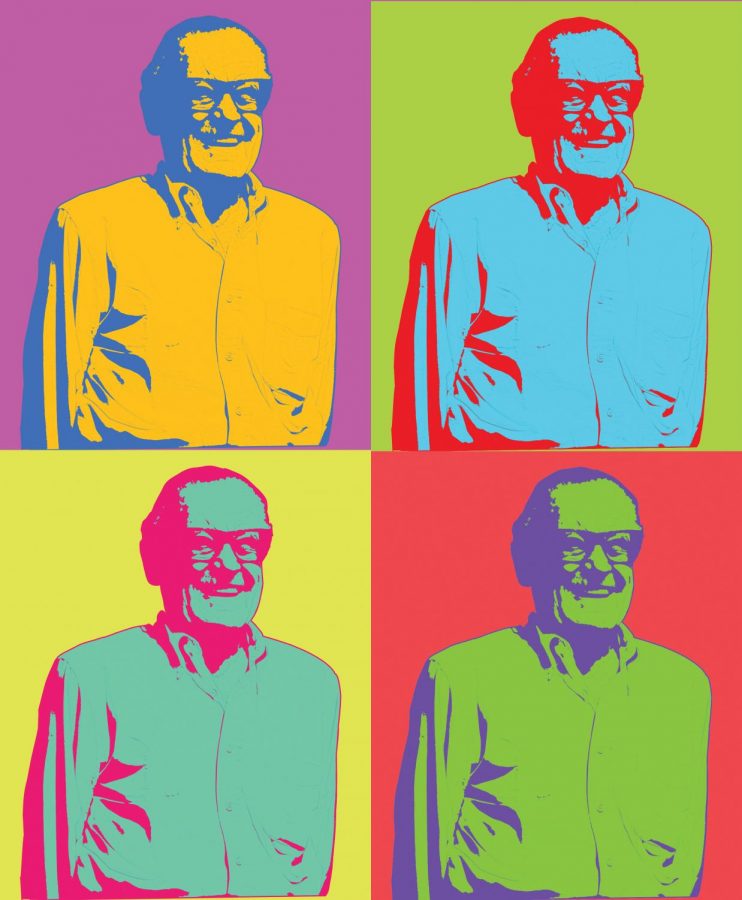A Tribute to Stan Lee
March 27, 2020
Last November, we lost a hero, Stanley Martin Lieber, more famously known by his pen name, Stan Lee. He passed away after cardiac arrest caused by respiratory and congestive heart failure. Lee was the creative mind behind many of our childhood heroes like Spider-Man, The Incredible Hulk and Wolverine. The explosion of superheroes in films that we see today wouldn’t have happened without his work, which began in the 1960’s.
Being the son of immigrants and growing up during the Great Depression, Lee worked hard to assist his parents and younger brother. At age 16, Lee became a writer for Timely Comics, now known as Marvel Comics. He worked there alongside comic book artist Jack Kirby and director Joe Simon on the Captain America series. In 1941, Kirby and Simon left Timely Comics, making a creative vacuum. Lee proved himself and soon became the interim editor.
When the United States entered World War II, Lee wanted to contribute to the war effort. He joined the U.S. Army, and his writing skills landed him at the Signal Corps Training Film Division as a playwright. There, Lee wrote training films, manuals and cartoons. He never saw combat, but Lee’s work contributed to the defeat of the Axis Powers.
After the war, Lee returned to Timely Comics and in 1961, he created the Fantastic Four series. At the time, comic books were seen as things only children read, but Lee wanted to challenge that assumption and incorporate elements that teenagers and adults could relate to. The Fantastic Four, and his subsequent comics, showed that having superpowers isn’t always glamorous — sometimes downright awful. The Thing, for example, is entirely covered in rock. He cannot return to looking like a human, forever changing whatever relationships he had prior to his mutation. This element transformed two-dimensional, archetypal heroes into fully fleshed out individuals who struggle just like us.
Not only did Lee give depth to his characters, but also to the worlds they inhabited. During the time Lee was crafting stories at Marvel, many socio-political events were occurring. The threat of nuclear warfare was a lingering concern; meanwhile, the fight over civil rights was at the forefront of American society. Lee wrote the X-Men as an allegory for the Civil Rights Movement; mutants represented marginalized minorities trying to survive in a world that is fearful of them. Characters like Charles Xavier and Magneto exemplified the two thought leaders of the time: Dr. Martin Luther King Jr. and Malcolm X. Additionally, Lee noticed the lack of diversity in comics and created Black Panther — Marvel’s first black superhero. A storyteller at heart, Lee recognized that these stories and experiences needed to be told, and he did it the best way he could.
In the 1980s, cartoons like Spider-Man and The Incredible Hulk TV series’ began airing, displaying the success of his work. This was the dawn of Marvel content being adapted for other media. Lee’s debut in a Marvel film was in “X-Men” (2000). He would do a cameo playing an insignificant character, typically as comic relief. His last cameo was in “Spider-Man: Into the Spider-Verse” (2018).
Lee did more than simply create heroes — he inspired and enriched the childhoods of several generations. Through his stories and characters, we felt like we weren’t alone; that by standing up for our values, we could make a difference.







Russell Keller • Aug 28, 2020 at 10:11 am
good piece-as usual- Brandon
Keep it up, we are all proud of your work here at Stacey HS